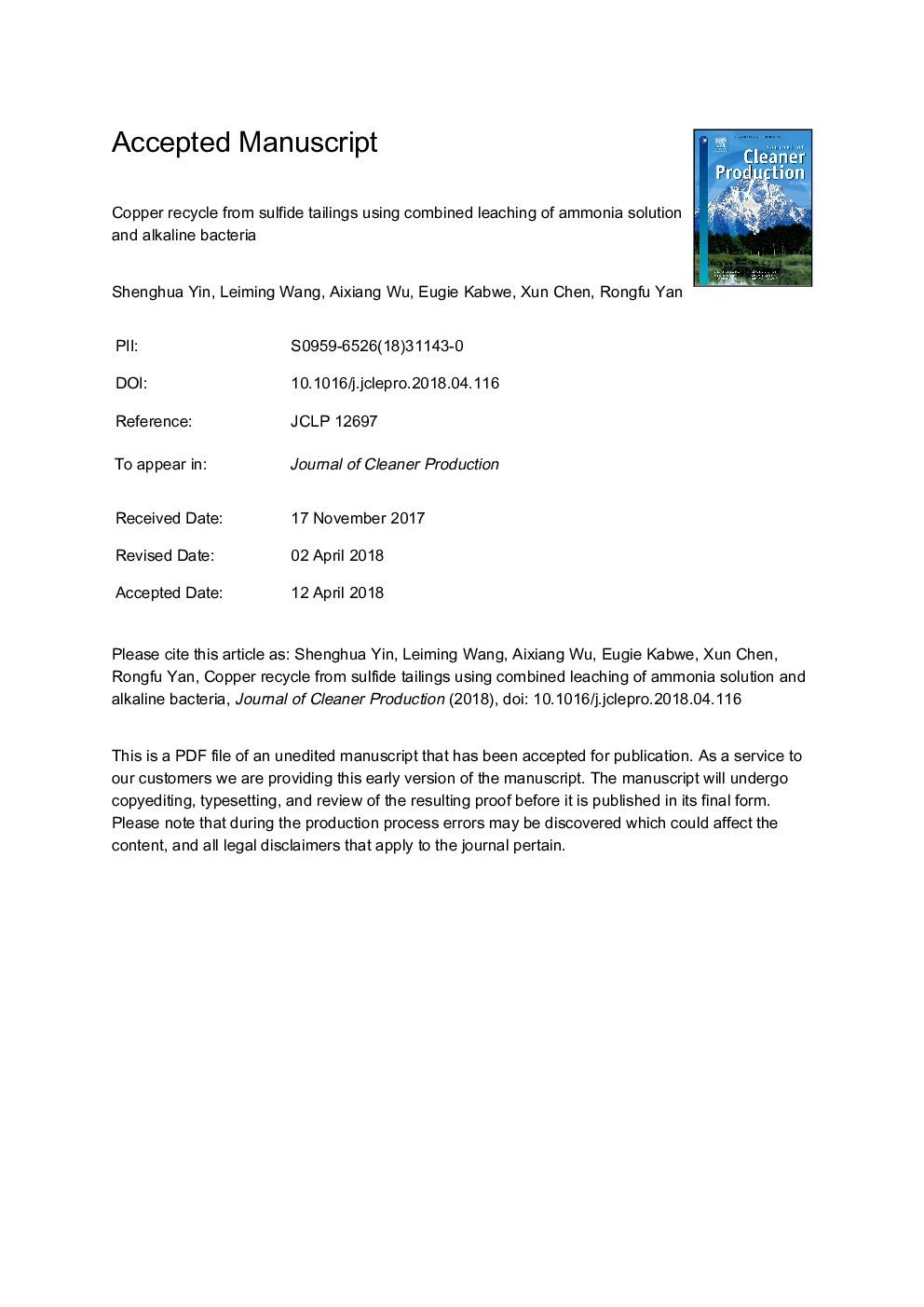| Article ID | Journal | Published Year | Pages | File Type |
|---|---|---|---|---|
| 8095272 | Journal of Cleaner Production | 2018 | 11 Pages |
Abstract
The migration of heavy metals and loss of valuable resources have become indispensable limitations to the developments of metal mines because of failing to remediate tailings ponds. Furthermore, serious environmental pollution from mine drainage water, soil during metal recovery from tailings by conventional acid leaching processes cannot be ignored. Thus, in this study, to recover valuable metals and reduce pollution, a cleaner metal extraction method from copper sulfide tailings using a combined leaching method employing ammonia solution and a novel strain of alkaline bacteria under alkaline condition was explored. The phylogenetic tree of a novel strain of alkaline bacteria isolated from tailings ponds at the Yangla Copper Mine in China was constructed from 16s rDNA sequence, and its optimal cultivation conditions and leaching characteristics were determined. A comparison leaching with alkaline bacteria, ammonia or a combination of the two clearly indicated that copper recovery was remarkably better with combination that Cu extraction rate increased from 4.42% (48 days, ammonia leaching) or approximately 20% (30 days, alkaline bacterial leaching) to 29.57% (30 days, combined leaching). The leaching mechanisms were discussed briefly. A synergistic effect between the alkaline bacteria and the ammonia solution was confirmed, especially at a lower ammonia concentration (30â¯g/L to 60â¯g/L). In addition, high ammonia concentration (>60â¯g/L) inhibited bacterial activity and even killed the bacteria. Although the mechanism of combined leaching still requires intensive study, the results of our exploratory experiments could significantly contribute to a green recovery method from tailings.
Related Topics
Physical Sciences and Engineering
Energy
Renewable Energy, Sustainability and the Environment
Authors
Shenghua Yin, Leiming Wang, Aixiang Wu, Eugie Kabwe, Xun Chen, Rongfu Yan,
